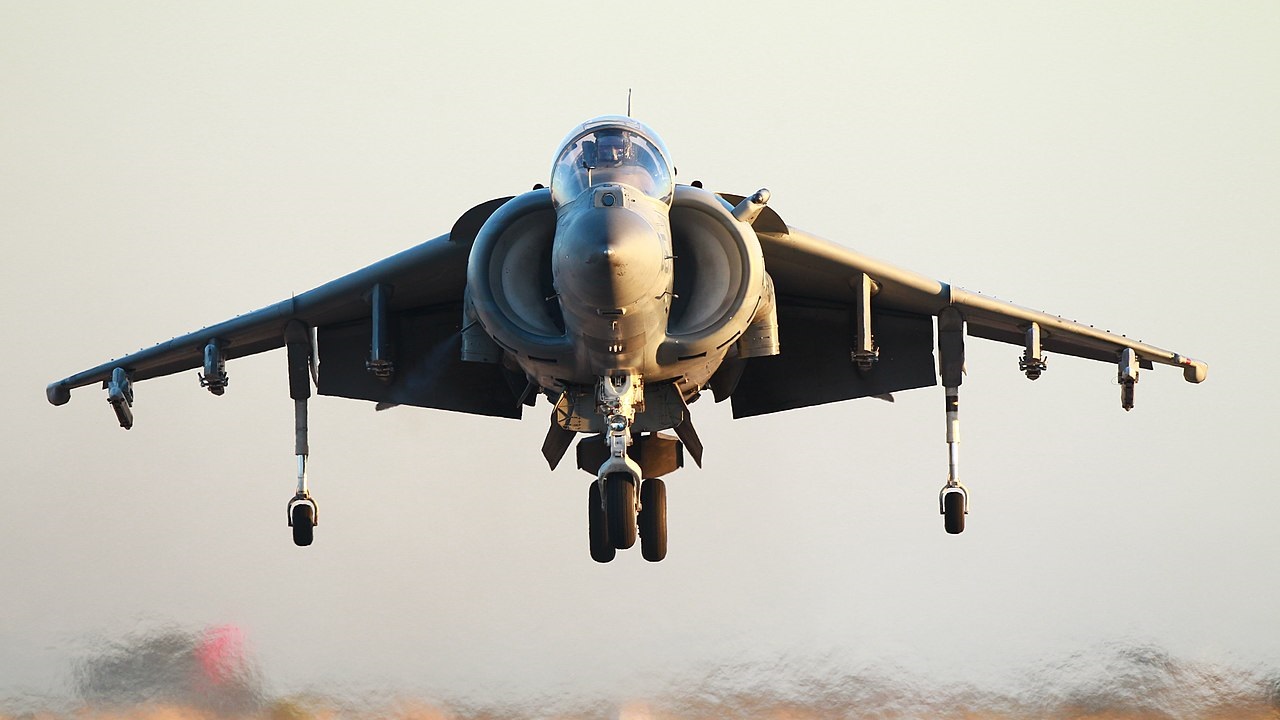Long before the Lockheed Martin F-35B, equipped with vertical or short takeoff and landing (V/STOL) technology, entered service, the McDonnell Douglas AV-8B Harrier was the U.S. Marine Corps’ premier jump jet. The Harrier is properly revered as America’s first-ever V/STOL military aircraft – and fondly remembered as the jet Arnold Schwarzenegger flew in James Cameron’s 1994 blockbuster, True Lies.
The original Harrier wasn’t a McDonnell Douglas product or even an American product. The original Harrier, which the Americans referred to as the AV-8A, was a Hawker Siddeley, a British-made product. While the AV-8A’s V/STOL technology was impressive and applicable, the first-generation Harrier had problems. First, it was dangerous; the novel V/STOL tech led to a high accident rate. Second, the jet had a limited range and a limited payload. The Harrier couldn’t carry even 2,000 pounds, whereas the smaller A-4 Skyhawk could carry 4,000 pounds. The truncated range and paltry payload made warfighting difficult – but the V/STOL technology was so promising that designers didn’t want to give up on the model. So, in 1973 Hawker Siddeley teamed up with McDonnell Douglas to create an improved Harrier variant.
Partnership Transfers Technology
The union didn’t last. Funding constraints, rising costs, and limited needs forced the British to abandon the project. Left alone with the project’s financial burden, America bowed out, too. But U.S. war planners kept V/STOL in mind.
In 1976, the U.S. Department of Defense authorized the development of a second-generation Harrier, one without the handicaps of the first. McDonnell Douglas began the process of reforming the Harrier, by modifying two AV-8As with new wings, revised intakes, and redesigned exhaust nozzles. The Harrier II prototype underperformed, with high drag and low speed.
Efforts to refine the Harrier’s aerodynamic profile didn’t have the desired effect: the plane was slow. But McDonnell Douglas had improved the jet’s payload and range. And the thing could still take off and land vertically. The Department of Defense, and the Marine Corps, were willing to look the other way on the jet’s lethargy. McDonnell Douglas was awarded a contract in 1979 for 336 second-generation Harriers.
The Improved Harrier Lifts Off
The end result of McDonnell Douglas’ Harrier reform efforts entered service in 1985. Known as the AV-8B, the new Harrier is a subsonic attack aircraft with notably downward sloping (anhedral) wings. The jet has one Rolls-Royce Pegasus turbofan engine, but with two intakes. To facilitate V/STOL and hovering, the Harrier has four synchronized vectorable nozzles – two in front of the engine and two behind. With a significantly improved payload, the Harrier II can handle 9,200 pounds of weaponry, carried beneath six external hardpoints.
The Harrier II was a harbinger of the modern jet age, the first combat aircraft ever to extensively use carbon-fiber composite materials. Twenty-six percent of the jet is made from composites, which shaved 480 pounds off the craft. Light yet strong composites were used to construct the Harrier’s large, yet lighter, wings and the rudder, flaps, nose, forward fuselage, and tail.
The U.S. Marine Corps has operated Harriers continuously since the 80s. Perhaps the zenith of Harrier relevance was Desert Storm when 86 Harrier IIs flew 3,380 sorties. Five jets were lost to SAMs. Two Harrier pilots were killed. U.S. Army General Norman Schwarzkopf later praised the Harrier as one of the most vital weapons systems used during the war.
The Harrier – old, slow, and as the F-35B enters service, redundant – is scheduled for decommissioning. The USMC plans to have the Harrier mothballed by 2026.
Harrison Kass is the Senior Defense Editor at 19FortyFive. An attorney, pilot, guitarist, and minor pro hockey player, he joined the US Air Force as a Pilot Trainee but was medically discharged. Harrison has degrees from Lake Forest College, the University of Oregon, and New York University. He lives in Oregon and listens to Dokken.

